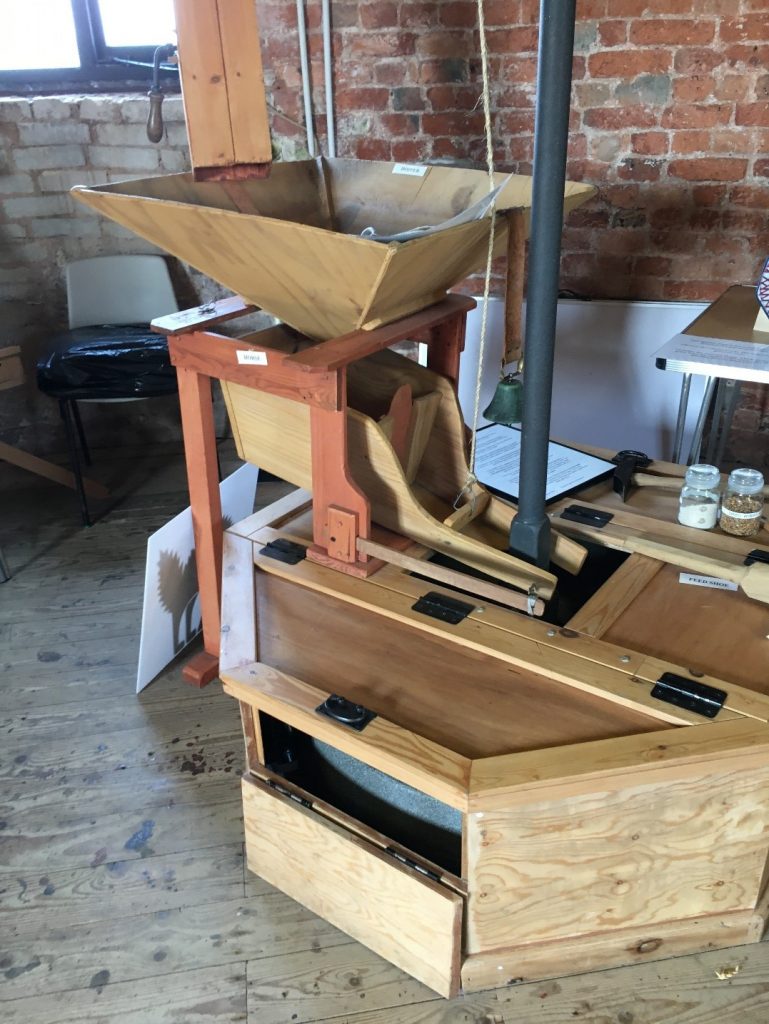 This is a near full size model of a typical millstone installation.
This is a near full size model of a typical millstone installation.
The upper millstone is driven from the great spur wheel by the drive shaft known as the quant.
The grain is fed down a wooden chute from the floor above.
It falls into the upper hopper.
From the upper hopper, the grain falls into the feed shoe.
The feed shoe is agitated by the rotating shaft to ensure a gradual trickle of grain into the eye of the millstones.
The wooden casing which encloses the millstones is there to contain the dust created. The casing is referred to as the tun, or vat.
The runner stone, rotating above the bed stone, grinds the grain into flour.
The action of the millstones can be best understood be viewing the spare mill-stone opposite. The grooves cut into the stones are called furrows.
The two sets of furrows passing each other cut the grain and drive it outwards.
The flour drops into the space around the stones, and then passes down a chute to the floor below, for grading and bagging.
The bell is called the “mill alarm”. When the grain runs low in the hopper the leather belt rises and allows the bell to contact moving parts, so warning the miller that he needs to put grain into the hopper.
An adjacent display board shows a cross section of the machinery.
